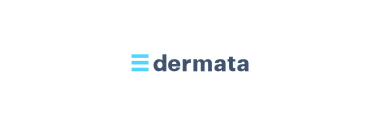T-Mobile Opens Registration for Starlink Direct-to-Cell Satellite Service Beta Launch
With more than 300 direct-to-cell satellites in orbit, T-Mobile and Starlink continue the march towards eliminating mobile dead zones, readying to beta test the service early next year

With more than 300 direct-to-cell satellites in orbit, T-Mobile and Starlink continue the march towards eliminating mobile dead zones, readying to beta test the service early next year (Photo: Business Wire)
What’s the news: Coming on the heels of FCC approval, T-Mobile has opened registration for a beta program for T-Mobile Starlink, a direct-to-cell satellite service that will help eliminate dead zones by providing coverage for the 500,000 square miles of land in
Why it matters: T-Mobile and Starlink are preparing to beta test the new service that promises to make dead zones yesterday’s news. By integrating satellites – basically cell towers in space - into the T-Mobile network, the Un-carrier is taking a major step forward in delivering its vision Experience Coverage Beyond vision
Who it’s for: All T-Mobile customers - including businesses and first responders - can register for access to the beta launch
Eliminating dead zones with cell towers in space – aka direct-to-cell satellites – is becoming a reality and hit a new milestone today. T-Mobile (NASDAQ: TMUS) opened registration for a beta program coming early next year as Un-carrier partner and satellite technology trailblazer, Starlink, continues to launch direct-to-cell satellites into orbit at a rapid pace.
“T-Mobile Starlink is the first major low-earth orbit constellation in the world paired with terrestrial cellular spectrum, making the phone in your pocket work in areas of the
Registration is now open and available to anyone interested in staying up-to-date or trying T-Mobile Starlink for themselves. The T-Mobile Starlink beta program is open and free for all T-Mobile postpaid voice customers with a compatible device. The beta gives a historic sneak peek to a not-so-distant future mostly free of cellular dead zones. Initially, T-Mobile Starlink will support texting with voice and data coming in the future.
Because of the critical role these first responder agencies and individuals play in safeguarding our communities, T-Mobile is prioritizing this audience for the beta program.
With Starlink’s direct-to-cell satellite constellation specifically designed for integration with the T-Mobile terrestrial network, the experience is expected to be much more user friendly than other satellite messaging services currently in market. For example, users will not need to hold their phone up to search for a signal. Both inbound and outbound messages are sent and received just like any other message.
The coming beta test marks the next big step for T-Mobile Experience Coverage Beyond, the Un-carrier’s vision to deliver the best service practically everywhere in the continental US,
Service When It Matters Most
While not yet ready for full commercial service, T-Mobile Starlink was turned on temporarily to provide a critical communication option for those without any other means to reach emergency responders and loved ones during Hurricanes Helene and Milton.
Even without the full constellation in place, customers with capable devices were able to receive critical emergency alerts and send and receive messages when satellites were overhead.
The system proved helpful for many that lost mobile and/or broadband access and provided critical data that will help further refine service.
Beta Program Sign Up
The beta will include text messaging initially with voice and data on the road map for future service.
Details and registration for consumers can be found here.
Business customers and first responder agencies can register here.
A Vision for Universal Coverage
When fully deployed, through direct-to-cell service, T-Mobile and Starlink anticipate having the ability to cover well over half a million square miles across the
As T-Mobile and Starlink continue work towards global connectivity, the companies welcome wireless providers from around the world to join their growing alliance, which aims to provide reciprocal roaming for all participating carriers. So far, KDDI (
Follow @TMobileNews on X, formerly known as Twitter, to stay up to date with the latest company news.
Limited spots available for the beta test. All customers with compatible device and postpaid T-Mobile voice plan are eligible for T-Mobile Starlink Beta program. Developing technology available in most areas, most of the time; ultimately available in most outdoor areas where you can see the sky. Beta experience optimized on select newer devices and will continue to test and extend to as many devices as possible through future software updates.
About T-Mobile
T-Mobile US, Inc. (NASDAQ: TMUS) is America’s supercharged Un-carrier, delivering an advanced 4G LTE and transformative nationwide 5G network that will offer reliable connectivity for all. T-Mobile’s customers benefit from its unmatched combination of value and quality, unwavering obsession with offering them the best possible service experience and undisputable drive for disruption that creates competition and innovation in wireless and beyond. Based in
View source version on businesswire.com: https://www.businesswire.com/news/home/20241215624846/en/
Media Contact
T-Mobile US, Inc. Media Relations
MediaRelations@t-mobile.com
Investor Relations Contact
T-Mobile US, Inc.
Investor.Relations@t-mobile.com
https://investor.t-mobile.com
Source: T-Mobile US, Inc.








